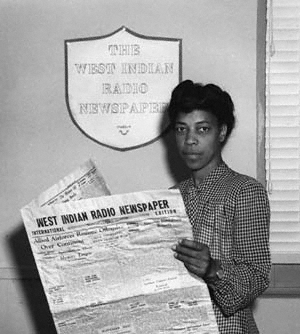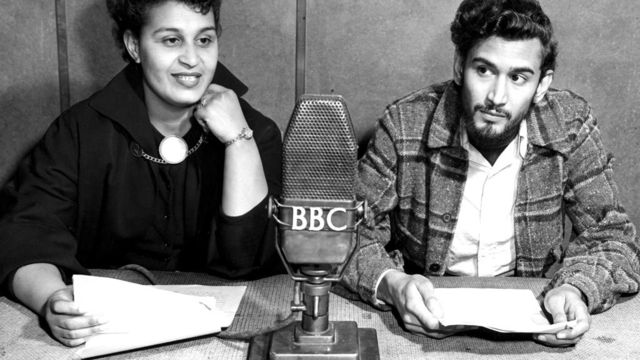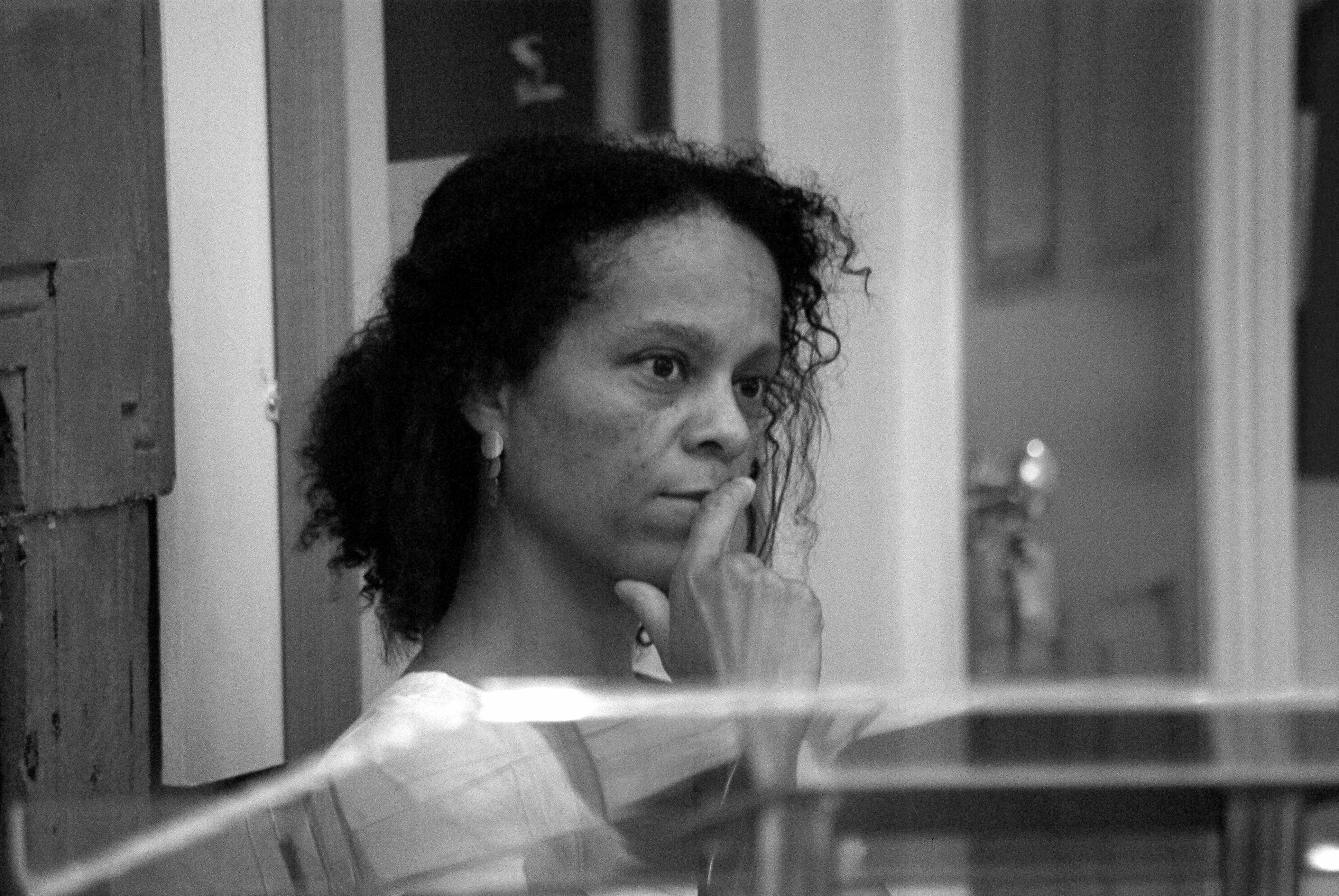Caribbean writers came to London after World War Two because they saw it as a kind of mecca, a metropole, a place that was the centre for publishing. Many of them were very disenchanted with life in the islands. Although the Caribbean islands were close together, they did not necessarily communicate with one another. A writer like V. S. Naipaul, born in Trinidad, would not have known a major writer like George Lamming, who lived in Barbados, and they wouldn’t necessarily have known writers like Andrew Salkey, who came from Jamaica.
Susheila Nasta
Writing a Caribbean London
Susheila Nasta, Emeritus Professor of Modern and Contemporary Literature at Queen Mary University of London, reveals Caribbean writers’ London.Key Points
- • Many Caribbean writers came to London in the 1950s with illusions of the motherland and the desire to make their mark.
- • The sense of Caribbean exile is evident in a lot of their writings which capture the disillusionment walking the streets of London and the migrant’s feeling of alienation.
- • In `The Lonely Londoners', Trinidad-born writer Sam Selvon gets inside the vernacular Caribbean voice, challenging and subverting the orthodoxies of the British canon, mapping London as a Black city and influencing later writers.
Illusions of the motherland

BBC radio presenter Una Marson reading a copy of the West Indian Radio Newspaper, during World War Two. Wikimedia Commons. Public Domain.
What linked them in the Caribbean islands were actually little magazines, small publications where they all published. Every Sunday afternoon, they listened to a BBC programme called Caribbean Voices. This programme was first produced by a Jamaican poet, Una Marson, who was based in London in the 1940s and was later led by a famous Irish-British journalist, Henry Swanzy. Many of these writers had got the odd poem or short story published on air.
They were excited by the prospect of coming to London and finding a means to publish their work . In addition, because they had all grown up in a colonial education system, they already had an idea of Britain; they were lured to the illusion of the motherland. Naipaul famously wrote an essay entitled “Jasmine”, in which he talked about listening to the tropical rain on corrugated iron roofs and reading about apples, in the classroom, but looking out of his window and not seeing anything like that outside. He always said, ‘The English language was mine; the tradition was not.’
Different journeys to London
Many of these writers came to London in the 1950s, although they didn’t necessarily come on the HMS Windrush, the famous ship which is often cited as an emblem of the moment of migration. There’s a funny story about two of them: Sam Selvon, who, like V. S. Naipaul, came from Trinidad, travelled by chance on the same boat as George Lamming, a Barbadian writer who wrote a famous book about the migrant experience called The Pleasures of Exile. They met each other on board.
Selvon was writing the draft of his first novel, which became A Brighter Sun, and they were fighting over a typewriter which Selvon had because Lamming also wanted to write. These two writers remained friends after they arrived in London. Naipaul and some others, like the famous cultural critic Stuart Hall, came on island scholarships. Both of those figures went to Oxford and had a different experience, whereas Selvon and Lamming tried to make their way in the corridors of the BBC, trying to get work.
Capturing the sense of exile
The sense of Caribbean exile is evident in a lot of the writings: the disillusionment walking the streets of London, which are not paved with gold; the fog and the greyness; the sense of distance from a small island culture and being adrift in a big city. This is something that Selvon especially captures in his iconic novel of migration and creation of Black London, The Lonely Londoners.
Interestingly, it’s called The Lonely Londoners, not “The Black Londoners”. It has become a classic work now – one of the Penguin Classics, in fact – partly because it doesn’t only create this specific moment of Black migration to Britain, but also creates a sense of any migrant’s feeling of dislocation and alienation.

Pauline Henriques and Samuel Selvon reading a story during the weekly Caribbean Voices programme in 1952. (BBC Caribbean Service). Wikimedia Commons. Public Domain.
Selvon’s London, though, is created especially through a world of words he brings with him from the Caribbean and translates into the world of the city he encounters. The characters in his book create the city on their own terms. They name its places; they make it manageable. They call Notting Hill “the Hill”; Bayswater, “the Water”; Marble Arch, “the Arch”. They’re terrified of the city. They try and shrink it by using stereotypes, by reciting stories that make them feel secure and by the banter which hides an emptiness underneath.
Rewriting London
To some degree, Selvon was colonising England in reverse, as the famous poet Louise Bennett described it. But he was doing more than that. He wasn’t just writing back. When the book first came out, a lot of reviewers looked for the idea of a sociological rendition of the city – this is what West Indian migrants do; this is how they behave. Selvon had focused particularly on unlettered immigrants, creating an oral vernacular discourse through which the reviewers thought he was translating a calypsonian aesthetic into a metropolitan context. But many of these early reviews tried to pigeonhole the work as a sociological, simple farce of West Indian manners, misunderstanding the invention of his style or the modernist ways in which he was trying to construct a Black city.
If you read this book and many of the books by these early Caribbean writers, they’re very inventive and very new – not in terms of their ways of writing, but in terms of the ways in which they represent London as a city. There are layers at the beginning of The Lonely Londoners of Dickens, of T. S. Eliot’s The Waste Land and ‘the Unreal City’. There are Joycean moments. There are many, many parallels. He makes the city epic. He creates characters that are in a kind of underworld, like Dante’s Purgatorio.
One of Selvon’s characters – and they’re all two-dimensional figures – is called Bart, who is persistently in search of his girlfriend, Beatrice. Selvon’s main character, Moses, suggests a prophet lead these boys – and they’re called “boys”, as if they were amoral, innocent figures in the wilderness, lost in London. Another character is christened Sir Galahad on arrival, but, of course, he tells a very different story from that of Malory.
Influencing later generations of writers
Selvon is playing on the orthodoxies of the British canon and rewriting it through a Caribbean lens. He’s wearing different spectacles. The Lonely Londoners is a very musical book, and it has continued to influence writers. Many writers have been influenced by Selvon largely because he tells the tale from the point of view of his unlettered characters, rather than creating a narrator who is distant from them. He gets inside the Caribbean voice.
That Caribbean voice is very much a manufactured artificial Caribbean voice. It’s a literary voice. Many people often think that maybe this was the way Selvon spoke. He didn’t speak like that of course; he wrote standard English as well, just like V. S. Naipaul. But he wrote London in this way because he was trying to get inside the sounds of the vernacular voice. He has influenced many writers because of this and because of the way in which he mapped the city for the first time, breaking open stereotypes which had been held by those British people these migrants encountered.
One of the writers he influenced quite strongly was a second-generation Caribbean writer called Caryl Phillips, who came to Britain when he was two years old. Phillips has always said that when he was growing up in Britain in the 1970s, there was nothing to read. He didn’t know anything about Black Britain because he wasn’t given any books about Black Britain. He read James Baldwin and Ralph Ellison. It was only when he encountered The Lonely Londoners that he began to see that Selvon had already mapped the streets of London, almost as if it was a Black A to Z.
Contemporary polyphonic narratives
Another writer who’s been significantly influenced by Selvon is the famous writer Andrea Levy, who sadly died a couple of years ago. Her prize-winning novel Small Island also deals with migrant experience, particularly the experience of her parents, who were both passengers on the Windrush. But Levy writes Small Island – and its name is significant – through the voices of four different characters. You have this multiple polyphonic narrative, something which Selvon also explores through the many ballads of his boys, which follow a picaresque form. Levy also points in that novel to a history that existed well before 1948. So, while she’s talking about characters coming to Britain and living in small, cramped rooms like those of the boys in The Lonely Londoners, she’s also talking about the histories that led to this – the history of the Second World War, and the histories in Britain and in the Caribbean, which are interlinked.

Bernardine Evaristo reading from Blonde Roots in The Long Room, Lancaster Maritime Museum 10.10.08. Wikimedia Commons. Public Domain.
Most recently, coming from a mixed African and Caribean heritage, is Bernardine Evaristo, who won the Booker Prize for her novel Girl, Woman, Other. Evaristo also explores voice and the sounds of Black women’s voices across a whole range of different constituencies of class and sexual orientation. Just as Selvon juxtaposes all these different voices in the city of London, Evaristo juxtaposes and creates a polyphonic narrative of different Black women telling stories, like Selvon did in the 1950s, that had not and have not been heard or engaged with in the way that they should have been as part of British literary culture.
Discover more
About Caribbean writers and new representations of London
Nasta, S. (2005). ‘Voyaging In’: colonialism and migration. In L. Marcus & P. Nicholls (Eds.), The Cambridge History of British Literature (pp. 563–586). Cambridge University Press.
Selvon, S. (with Nasta, S.). (2008). Moses Migrating. Lynne Rienner Publishers. (Original work published 1983).
Nasta, S. (2016). Sam Selvon: An Afterword. In M. McIntosh (Ed.) Beyond Calypso: Re-reading Samuel Selvon (pp. 150–157). Ian Randle Publishers.
About Susheila Nasta
Here's how we use cookies
To give you the best experience, we tailor our site to show the most relevant content and bring helpful offers to you.
You can update your preferences at any time, at the bottom of any page. Learn more about how your data is used in our cookie policy.